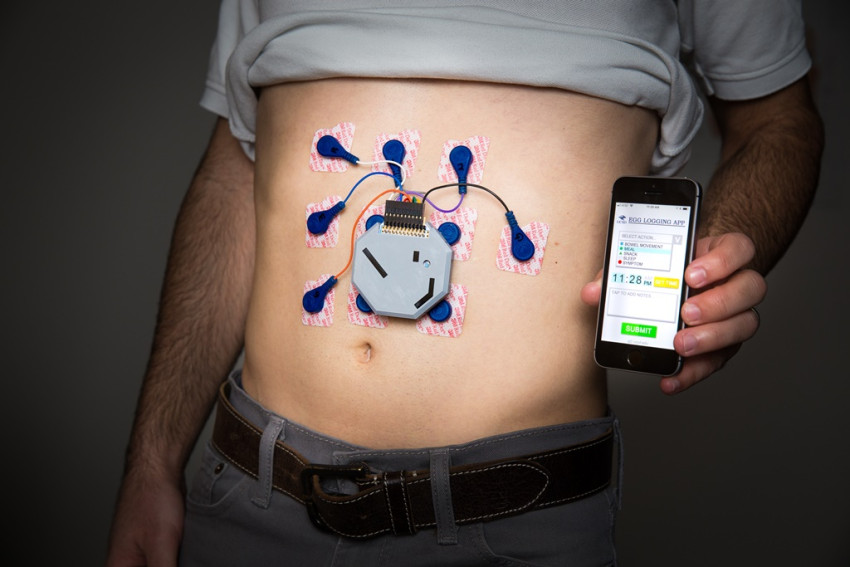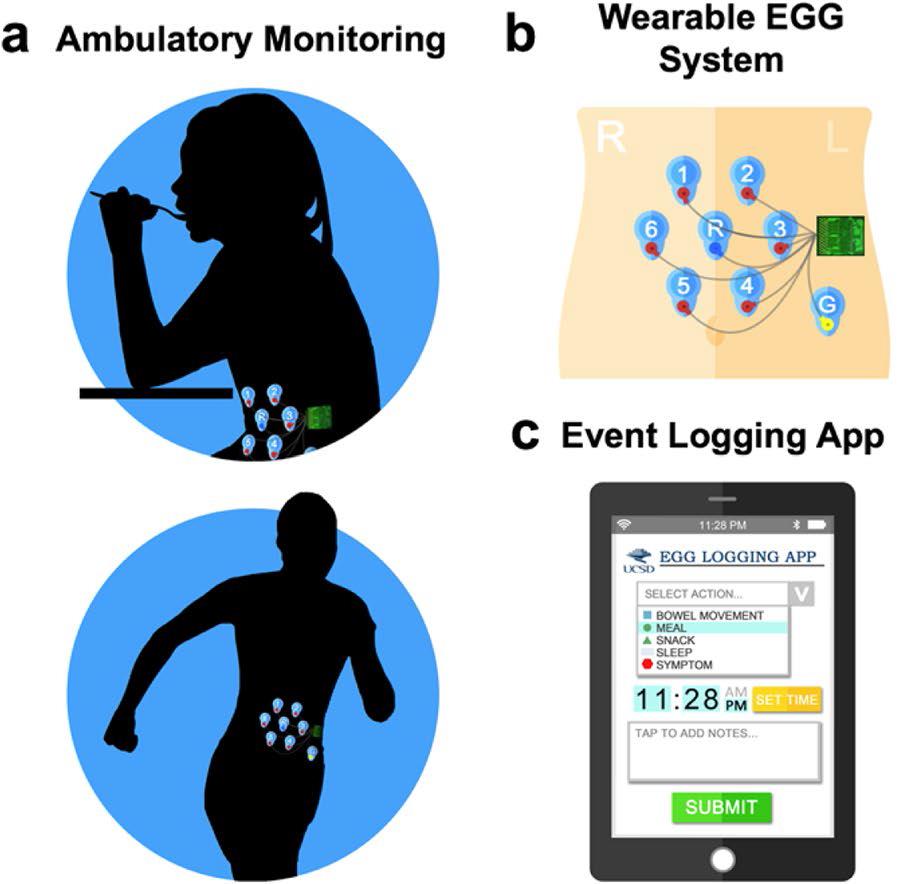
Belly sensors measure stomach activity
For some people whose stomach doesn’t function properly, a catheter with sensors is inserted to examine the stomach. This requires a (light) anaesthetic, but doctors are keen to measure stomach activity non-invasively and while the patient is carrying out their normal daily activities. That's now possible using a new test device made up of electrodes stuck to the belly that record the electrical activity of the stomach.
The device was invented and produced by a team of doctors and engineers from the University of California in San Diego, in the US. It comprises ten identical electrodes – precisely the same as those used to record an electrocardiogram (ECG) – that are applied in a grid to the lower abdomen. The electrodes are connected to a unit containing the electronics required to process and transmit the recorded data.
Filtering out
The device records electrical activity in the stomach that forms a unit of measurement for the activity of the organ. Because a grid of electrodes is used, this provides information on where and when the activity occurs. The biggest challenge for the team was to distil the signals from the stomach from the mountain of electrical activity present in the abdominal area. After all, electrical signals are also produced by the heart (pulse), the stomach muscles when walking, and intestinal activity. The researchers managed to unravel all the signals using a couple of algorithms, so that doctors can view each signal separately (heart, stomach, intestines).
Stomach pain or nausea
‘This device will help us determine if the stomach is functioning properly during meals and – most importantly – when patients are experiencing symptoms such as nausea and belly pain,’ says gastroenterologist David Kunkel, from the UC San Diego Health hospital, one of the researchers, in a press release.
E-health
This test device could soon provide gastroenterologists with a new aid, in addition to the information given by patients and an internal examination. A patient’s stomach activity can now also be monitored continually outside the hospital. But this device doesn’t just provide more useful results, it could also make healthcare cheaper, being a form of e-health.

‘We think our system will spark a new kind of medicine, where a gastroenterologist can quickly see where and when a part of the GI tract is showing abnormal rhythms and as a result make more accurate, faster and personalised diagnoses,’ says the paper's head author Armen Gharibans of the University of California in San Diego.
Reliable values
The new test device has so far been trialled on eleven test subjects, who had recently been subjected to manometry, in which a catheter with pressure sensors was inserted. After comparing the two test methods, the new, external test device was proven to provide reliable results.
‘The technique outlined is the best way to evaluate children with motility and functional GI disorders. It provides the information without need for sedation and it offers the flexibility to monitor kids while they continue their daily activities,’ says paediatric gastroenterologist Hayat Mousa of UC San Diego Health in the press release.
Meals and sleep
The researchers are currently working on interfacing the test device with a smartphone. An app will run on the phone that allows patients to record their meals, as well as sleep patterns and other relevant activities. These are all things that doctors would very much like to know, as there could be a connection with the activity of the GI tract.
Digestive problems are sometimes unrelated to these factors, but can also be a side effect of diseases such as diabetes and Parkinson’s. Eventually the new technology could help to control abnormal activity in the GI tract.
If you found this article interesting, subscribe for free to our weekly newsletter!
Opening photo: University of California San Diego
Meer artikelen

Een AI-fabriek in Groningen

Gezondheid meten via zweetdruppels
Nieuwste artikelen

Een AI-fabriek in Groningen






